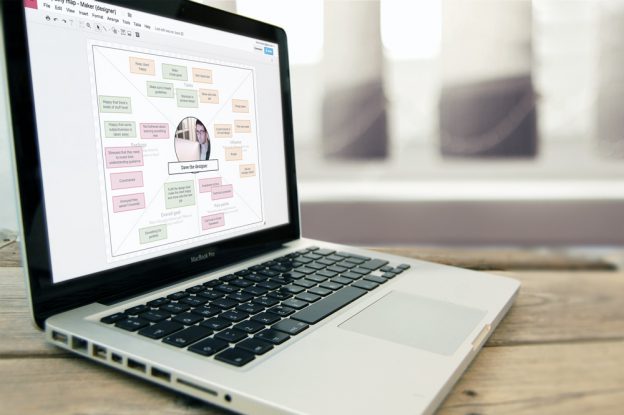As a small, agile, multi skilled and geographically dispersed team that works on multiple products, building a shared understanding of needs and priorities for our work is key. Furthermore building empathy with our users empowers us to be better designers.
“In the end, design is all about empathy. This is what leads to creativity, inspiration and breakthrough solutions to problems.” – Leon Segal
Part of my role as UX specialist is to ensure that our whole team builds this empathy which we can carry throughout our work. One of the best ways for us to do this is to collaboratively work on UX artifacts such as Empathy maps.
Why empathy maps
Along with many other UXers, I have started to favour empathy maps as an augmented form of user persona, as they allow you to focus on what users are thinking and feeling. They help to paint a picture of why users make choices and decisions or take certain actions that users themselves may find hard to perceive and articulate.
We’ve found Paul Boag’s adaptation works better for our team – for the reasons he states in his post – than the standard Empathy map template. Completed maps seem to resonate more than standard user personas and are a great reference point that’s easy to dip in and out of when needed. Furthermore they are quick and simple to produce and easy for everyone in the team to collaborate on.
Collaboration is key
Any collaborative ideation or workshop session generally benefits from everyone being in the same room, but due to numerous constraints this a luxury we can’t always afford – and I very much doubt we’re alone here.
It’s all too easy to just involve the 2 or 3 people that are in the same location as yourself to create such artifacts. But they won’t always build a full picture, or the shared understanding that you’re looking for. Worse still, there’s the urge to assume that your team already has a shared understanding and just plough head first into your work.
Its essential that the whole team gets involved bringing their individual understanding, knowledge, skills and expertise. However running a remote workshop with a whole team can be tricky and requires planning, preparation and patience.
Making it work for a dispersed team
- Where possible use face to face video conferencing
- Create your map in an online tool such as google drawings that the whole team can access and contribute to – Here’s our template
- Allow approx. 30 min per map you wish to create, plus 10 min at the start and end to introduce and wash-up the session
- Make someone the map owner whose role is to make sure (a) Everyone understands each of the notes and are happy with the wording, and (b) any future edits are done at the consensus of the team
- When adding notes to the map: Write, Explain, Place – It’s important that no one adds anything to the map without explaining it first
- Adding photo to the map helps you to visualise a real person to build empathy with
- Use colour to signify when notes support (green) or detract (red) from your products objectives
Hopefully these tips will come in helpful if you need to run a remote empathy map session. And I’d urge you to try. There are actually a few benefits to taking this approach. Your finished maps can be centrally stored, easy to access, edit and print out when needed. But more helpfully by creating them digitally in the workshop there’s no need to type up afterwards!


2 replies on “Conducting a remote empathy mapping workshop”
what’s an example that clashes with objectives?
The Heller Approach is considered to be one of the Best Acting Schools in Hollywood. All this instruction, all in one class for one low price. Compare us to competing acting schools in Hollywood where these subjects are separate, each at their own price point.